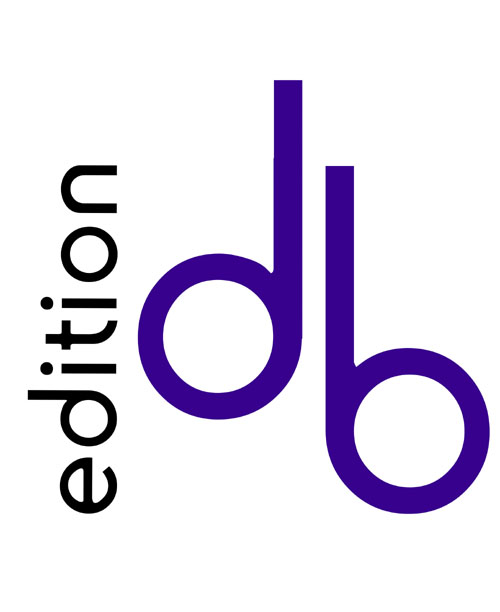
- 7 clarence grove
- horsforth
- leeds, LS18 4LA
- UK
- tel: 0113 258 1300
- order online
- order by fax
- www.editiondb.com
- 0113 258 2556
- info@editiondb.com
Review - Air (on a G crook) J S Bach arranged for (hand) horn and piano by Bob Ashworth
edb 0702001 Chamber Music series
Have you ever wondered what the result might have been had Dennis Brain met Beethoven? Just think what music such a meeting might have brought forth! I get the impression that Bob Ashworth had been contemplating the outcome of a meeting between J S Bach and the great French horn virtuoso Louis-François Dauprat when he made this arrangement of the famous Air from Bach's third Orchestral Suite. In his great Méthode Dauprat explains that players of the natural horn should practice solos using crooks other than the one specified by the composer in order to obtain variety of timbre and different effects with stopped notes. In this homage to Dauprat, Bob Ashworth has given us just one piano part - in the key of D - but six versions of the horn part, so that aspiring hand horn players can practice it on different crooks. It works well on the G crook, Bob's first choice, but for my money, his version for horn in D seems remarkably idiomatic. If hand horn is not you thing, then the various versions make excellent transposition practice, especially the one in F sharp, but if transposition is not your thing (Can I ask "Why not?") it also appears in F. As usual with edition db, score and parts are excellently presented.
John Humphries, The Horn Player, BHS, Vol.3, No.1, April 2006
_________________________________________________________________________________________________________________________________
Review - Air (on a G crook) J S Bach arranged for (hand) horn and piano by Bob Ashworth
edb 0702001 Chamber Music series
Since I am a natural horn enthusiast, this edition caught my attention immediately. Yes, it is the old Bach favourite, taken right out of his Orchestral Suite No.3, BWV 1068, (ca. 1720), and arranged so the melody is played on a natural horn crooked in G (FYI, Bach's original concert key of D major is used). In the arranger's words, "to perform with piano accompaniment the specified crook (or transposition) must be used. However, as further study material for hand horn technique it is possible to play any of these six versions on any other crook. On the valve horn they may also be used as further transposition exercises in any key." Thus, we have the exact same tune notated in six different keys.
This edition has several practical applications. First, those inclined to use the natural horn horn will discover some useful options in crook choices, each of which produces different stopped and open combinations for the same concert pitches - very instructive. Second, natural hornists will find the opportunity to play with a fixed-pitch instrument very revealing regarding their intonation on the different crooks with the various hand positions. Third, players of valved horn will have a familiar piece to practice transpositions. Finally, all players, regardless of instrument choice, will have a nice transcription to use as special music for church services or even on recitals. I will get a lot of use out of this edition.
Jeffrey Snedeker, The Horn Call, IHS, Vol.XL, No.1, October 2009